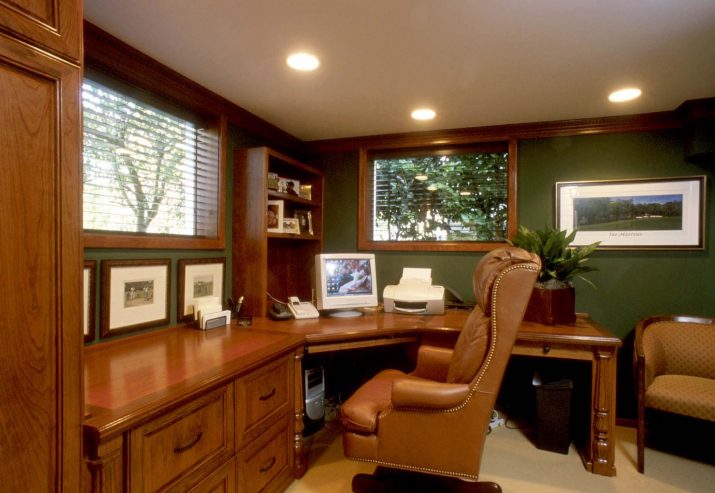Sure, having an office at home sounds practical on the surface. If you can telecommute, that’s less time in the car, more time to devote to your work and more time with your family. Plus, you can ditch the tie or pantsuit and set your own hours.
So why does your home office drive you crazy? Neck and back pain, headaches, clutter, frustration, and jealousy toward those who commute an hour to sit in the corporate office all day are all symptoms of a poorly designed workspace. Poor design creates strain and fatigue, but a well designed office can actually help you work more efficiently and frustration-free.
Read on to redesign!
- Step #1: Assess Your Situation
Working at a desk is a physical activity. Every time you turn in your chair, crook your neck to use the phone, or focus on the screen, you’re using a certain set of muscles. Those muscles, like a runner’s legs or a weightlifter’s bicep, are subject to fatigue.
Okay, you’re not a triathlete in the office, but if you’re behind the desk a lot, a poor office design will leave you feeling tense and fatigued at the end of the day.
Spend a couple hours working and take note of every time you twist awkwardly in your chair, reach for a heavy object that’s too far away, get up to fetch something, or rub your sore eyes.
- Step #2: Plan for Comfort
Now that you know where the strain is in your workday, try to eliminate it. But before you start shifting around the furniture and knocking holes in the walls, create some guidelines.
A professional designer can help you draw up a complete plan, but you can start by just drawing a bird’s eye sketch of the empty room. Then add your ideal office configuration. It should take into account these basic office design principles:
- Placement. Everything you use regularly should be within arms’ reach. Other items you need to work should be accessible from your rolling chair.
- Ergonomics. Your feet should rest flat on the floor, your wrists should be level with your elbows while typing or mousing, and your chair should support your lower back. Your computer monitor should be positioned so that your neck is tilted just slightly forward.
- Organization. Maintaining a clear workspace is key to working efficiently. Stash files under the desktop and away from your feet. Be sure you have shelves and cabinets for books and other objects.
- Lighting. Use ambient lighting to remove dark corners in your office and focused lighting under cabinets/shelves to illuminate your work surface. Be sure to avoid creating hot spots with bright light bulbs.
- Step #3: Customize
Your body is not exactly like any other of the 7 billion other bodies on this planet. Thankfully, height-adjustable desks, custom desk layouts, and adjustable chairs can help. Every room is also designed a bit differently, so be creative in maximizing your space. Consider wall cabinets, a corner desk, and a separate workspace for small meetings. If your room has a window, face it with your desk and computer monitor. The backlight of the window and the fact that you will glance out of it every so often will also alleviate eye strain. If you don’t have a window, add a visually interesting element to the room, like a work of art, a fish tank, or a bulletin board of favorite images.
With a little planning and effort, you can transform your home office into a productive workspace, minimize stress on your body, and emerge feeling good at the end of the day.
| Written on 5/24/2012 by Roger Hockett. Roger is the owner of Workspaces, Inc., a custom office design firm based in Newcastle, WA. He has been helping people redesign their home offices since 1995. | Photo Credit: Sean MacEntee |
